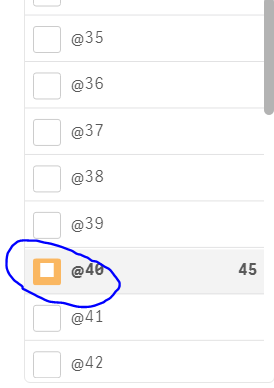Unlock a world of possibilities! Login now and discover the exclusive benefits awaiting you.
- Qlik Community
- :
- Forums
- :
- Analytics
- :
- New to Qlik Analytics
- :
- Re: Sharepoint headers
- Subscribe to RSS Feed
- Mark Topic as New
- Mark Topic as Read
- Float this Topic for Current User
- Bookmark
- Subscribe
- Mute
- Printer Friendly Page
- Mark as New
- Bookmark
- Subscribe
- Mute
- Subscribe to RSS Feed
- Permalink
- Report Inappropriate Content
Sharepoint headers
Hello All,
I created a dashboard based on a link to a sharepoint located on our companies website. Once I upload the data I go into data load editor, find the web file on the right hand side after loading the data, select data, find the line item @# line item, then check the columns I need for my dashboard. Once account managers go in and include more line items in the sharepoint and click the "load data" it comes up with an error message as if if can't find the data anymore or the headers have moved. Is there anyway to lock in the headers so when more line items are included we won't get a load data error ?



- Mark as New
- Bookmark
- Subscribe
- Mute
- Subscribe to RSS Feed
- Permalink
- Report Inappropriate Content
You will have to create a more dynamic load script. Referring to what seems to me as a table .... @40 ... must be a small table in the HTML where SharePoint shows a "value".
Your load script might have to look like this:
FOR tableNo=1 TO 100
SharePointData:
LOAD
*
FROM
[https://<your-sharepoint-site/...........] (...... table is @$(tableNo) ) ;
NEXT
- Mark as New
- Bookmark
- Subscribe
- Mute
- Subscribe to RSS Feed
- Permalink
- Report Inappropriate Content
so the $ is the key to the issue?
- Mark as New
- Bookmark
- Subscribe
- Mute
- Subscribe to RSS Feed
- Permalink
- Report Inappropriate Content
thank you for your response as well!
- Mark as New
- Bookmark
- Subscribe
- Mute
- Subscribe to RSS Feed
- Permalink
- Report Inappropriate Content
when I included the $ and attempted the load data it returned this

- Mark as New
- Bookmark
- Subscribe
- Mute
- Subscribe to RSS Feed
- Permalink
- Report Inappropriate Content
No it is also a leading and a following ellipsis/paranthese that needs to be there:
$(tableNo) the ( and ) is important .... it is called a $-sign expansion and it makes Qlik to look for a variable named tableNo in this case and take its value and put in place of the entire expression.
So if the variable tableNo contains the number 247 then @$(tableNo) will turn into @247, This will happen before it tries to do the load so when the load is going to happen Qlik will try to load the table in HTML named @247.
If it can't find @247 it will give an error. So to get a script that accepts that some tables are not there you need to turn off immediate error handling - that is switch it to silently so it can go on with the loading of tables that might exist and ignore those that doesnt exist. Remember that SharePoint is dynamic so we can't know so much about exactly how many and which of the tables are present from load to load.
We just try a range and read the tables that are there and accept that a number of tables are not...
SET ErrorMode=0;
FOR tableNo=1 TO 100
SharePointData:
LOAD
*
FROM
[https://<sharepoint-site/...........] (...... tab @$(tableNo) ) ;
NEXT
SET ErrorMode=1;
Look closely as it is ellipsis around the tableNo variable after the $ !
With ErrorMode=0 we tell Qlik to ignore errors more or less and continue execution and try the next table...
The upper number of 100 is just a wild guess as to how many "tables" there are in a single SharePoint web-page. You have to observe and try it out.